Cornelia Parker: Dark Cold Matter
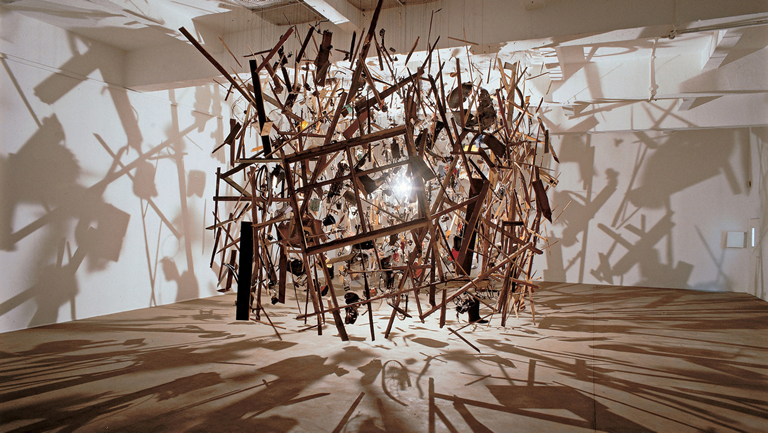
Parker’s piece struck me for two reasons. First is the performative idea of blowing up a shed to fragment it. Second, is the fact she displayed it as an “exploded view” (often seen in engineering to dissect a complex component with lots of parts), as if this was a snapshot of the shed mid-explosion. The single lightbulb in the middle, amongst the shards of shed, casts dramatic shadows on the wall that, from an engineering perspective, seem to have scaled up the fragments respective sizes. A shed is also symbolic as a building where a lawnmower and other garden tools are stored. Thus fitting with the sensory idea of cutting the grass on a Sunday. By exploding it, Parker is exposing an icon of engineering and homely culture; after all many discoveries were made in a shed: the Wright brothers and their aeroplane and Ikea and Dyson were both founded in the founders’ respective sheds. In response, I would like to use the idea of an “exploded view” to break down the structure of an object to make it easier to analyse.
Conrad Shawcross
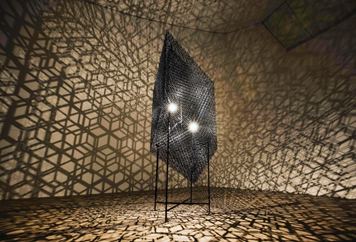
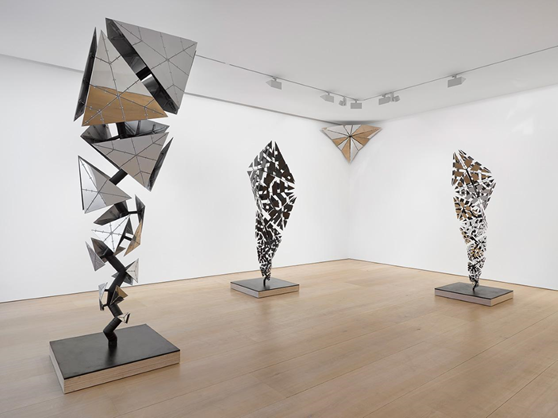
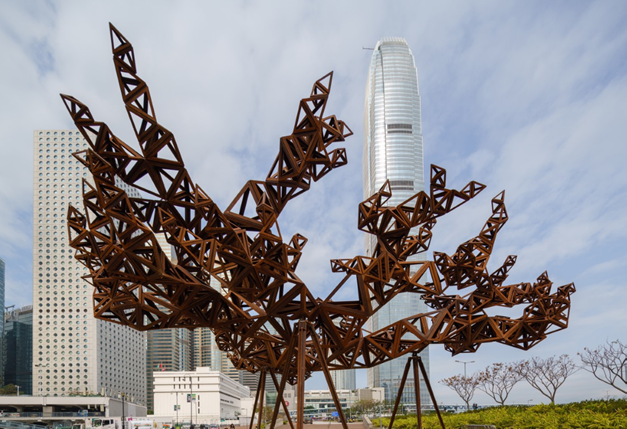
I find these sculptures by Shawcross utterly fascinating. It links together the idea of exploded views (piece above) with geometrical shadows (left). The piece top left looks similar to my Blender crystal growths, as if a computer algorithm has dictated how the triangular prisms grow, their size and their direction. The other two pieces seem very closely linked to Cornelia Parker’s rearrangement of an exploded shed, with the above piece above resembling that work’s stuck-in-motion feel as the metal pieces seem to be stationary in the air, as if gravity was momentarily switched off.
My Response
Intro
Plan (Physical)
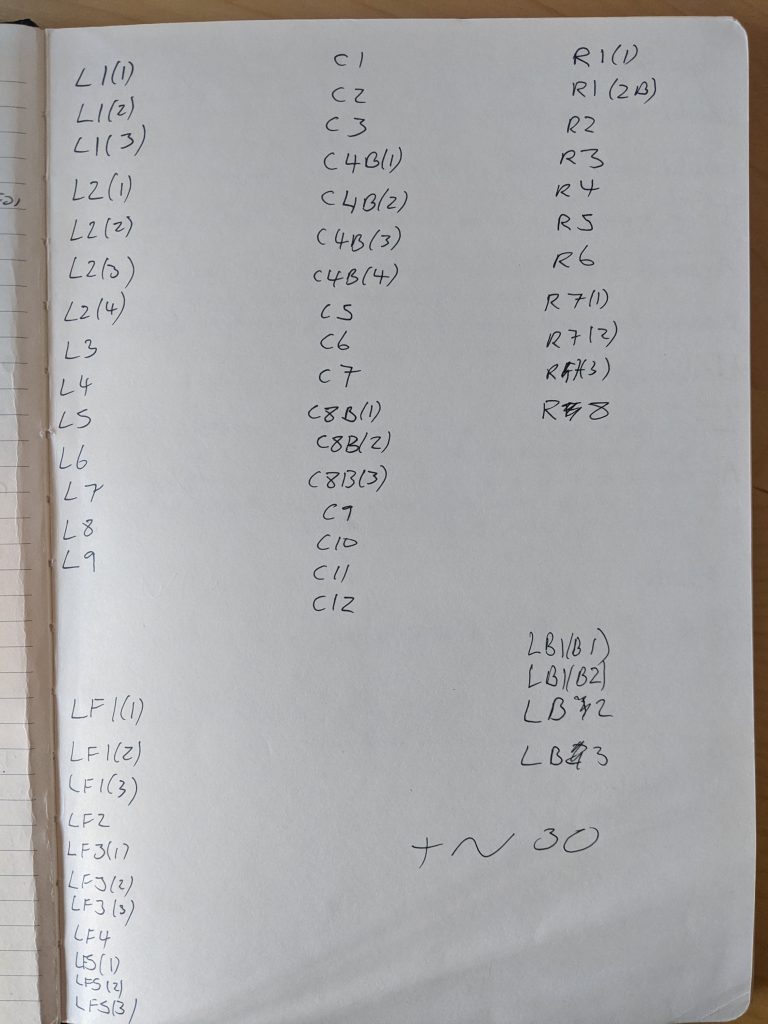
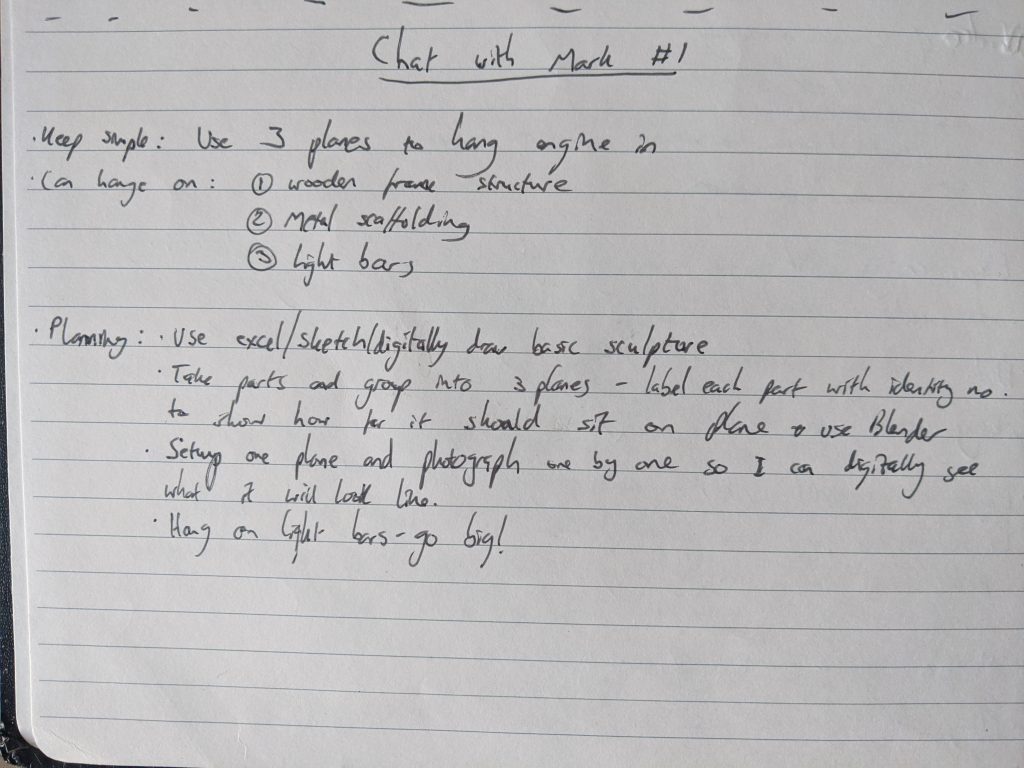
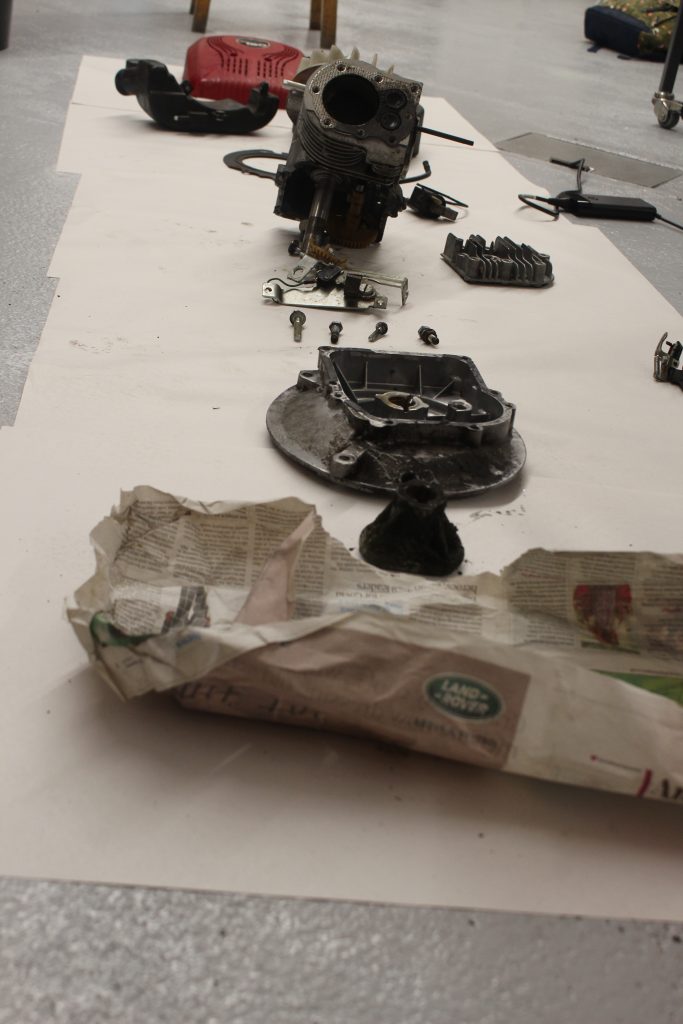
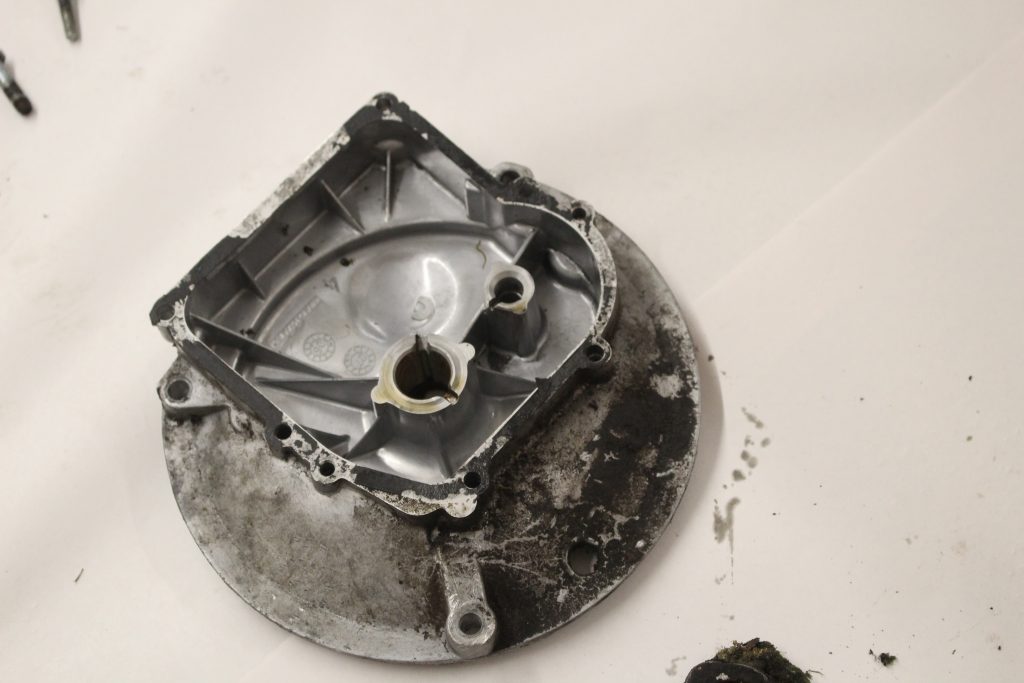
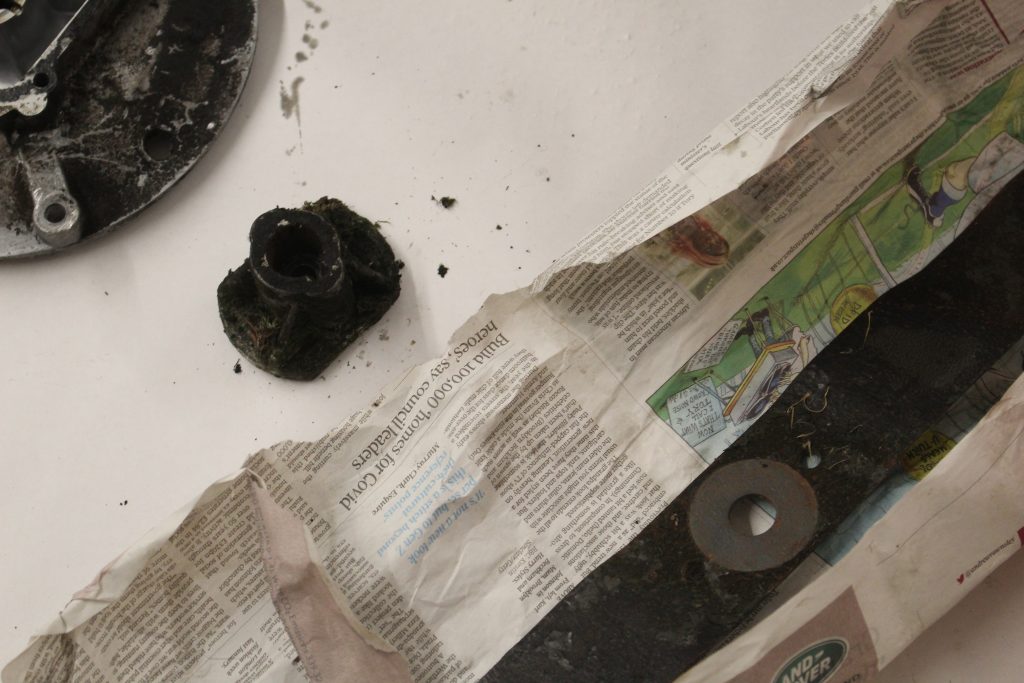
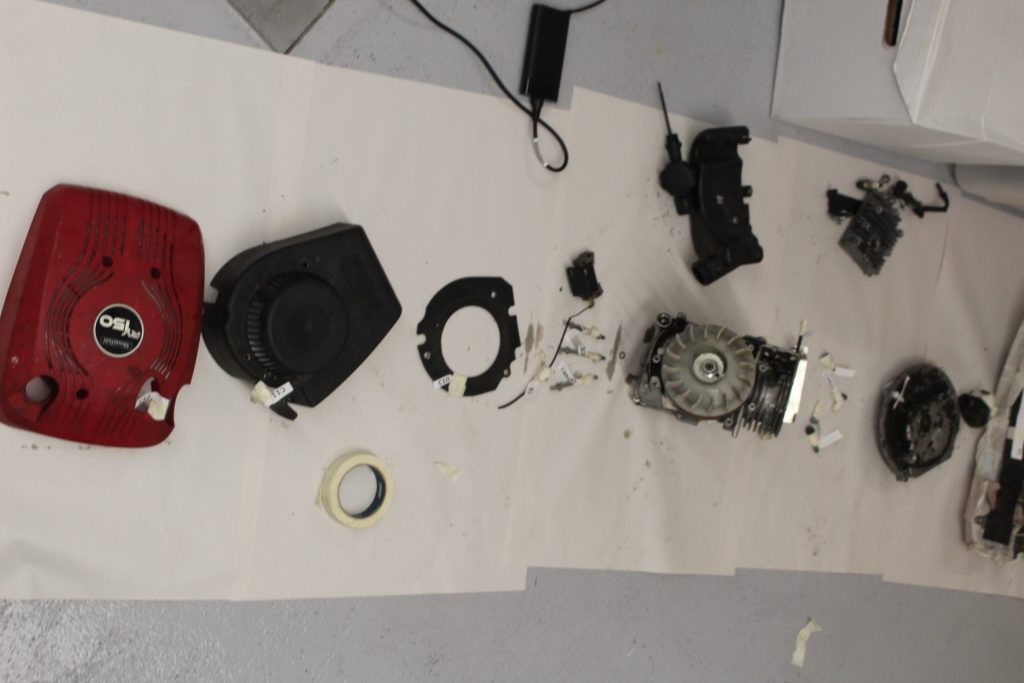
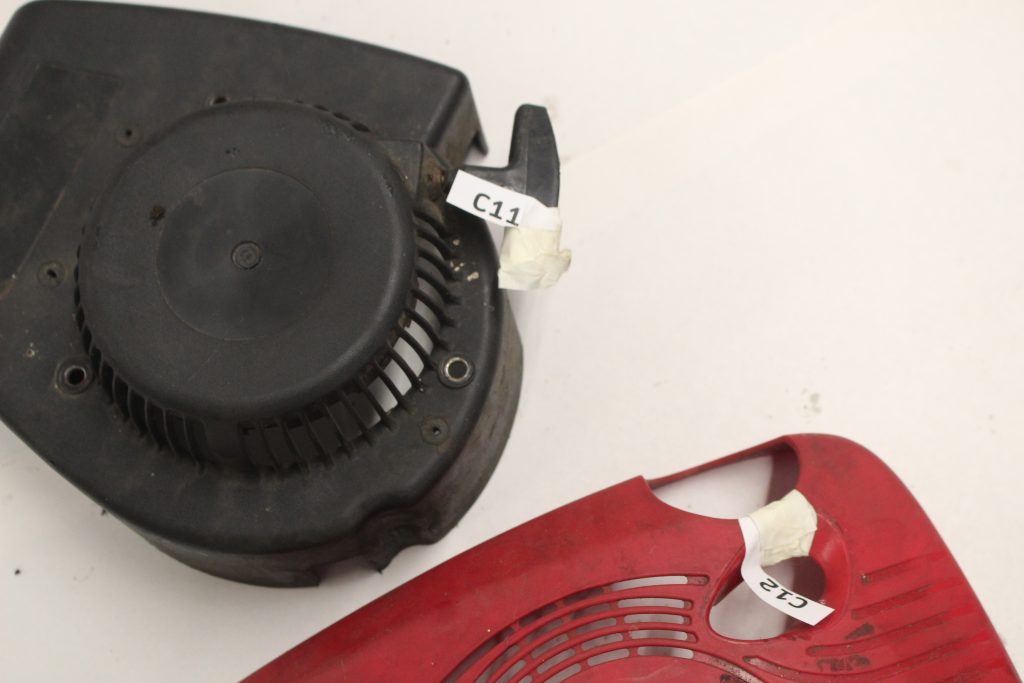
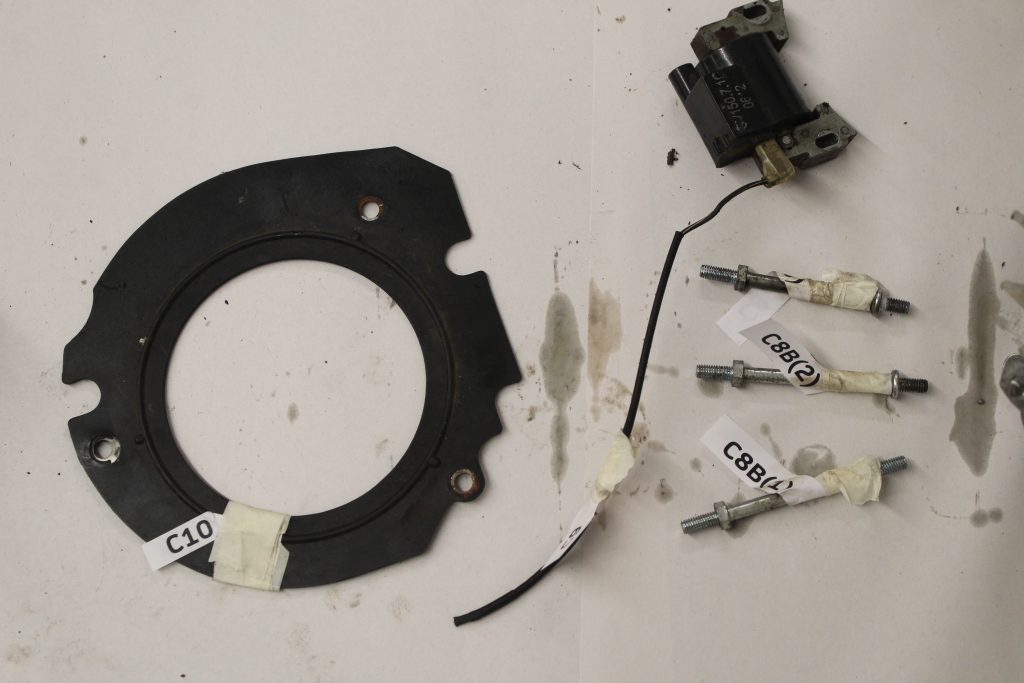
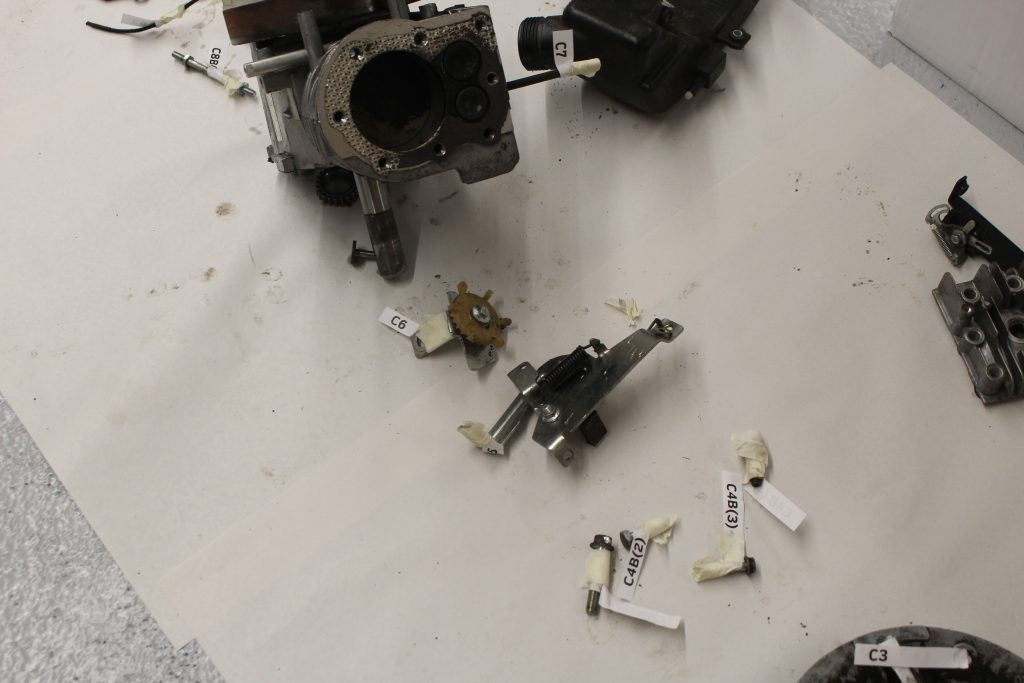
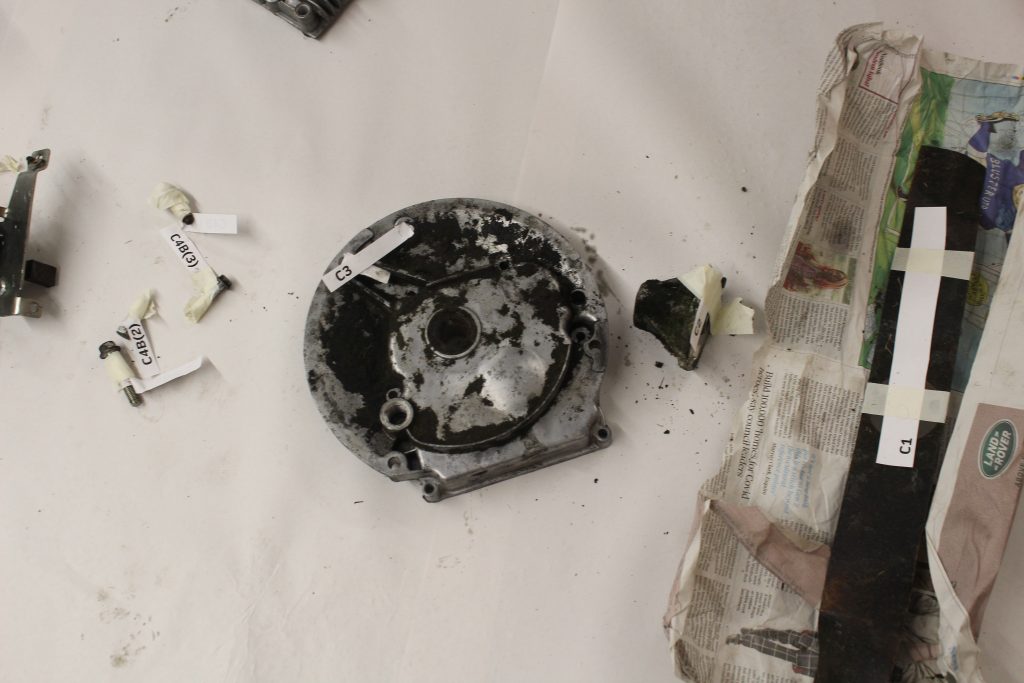
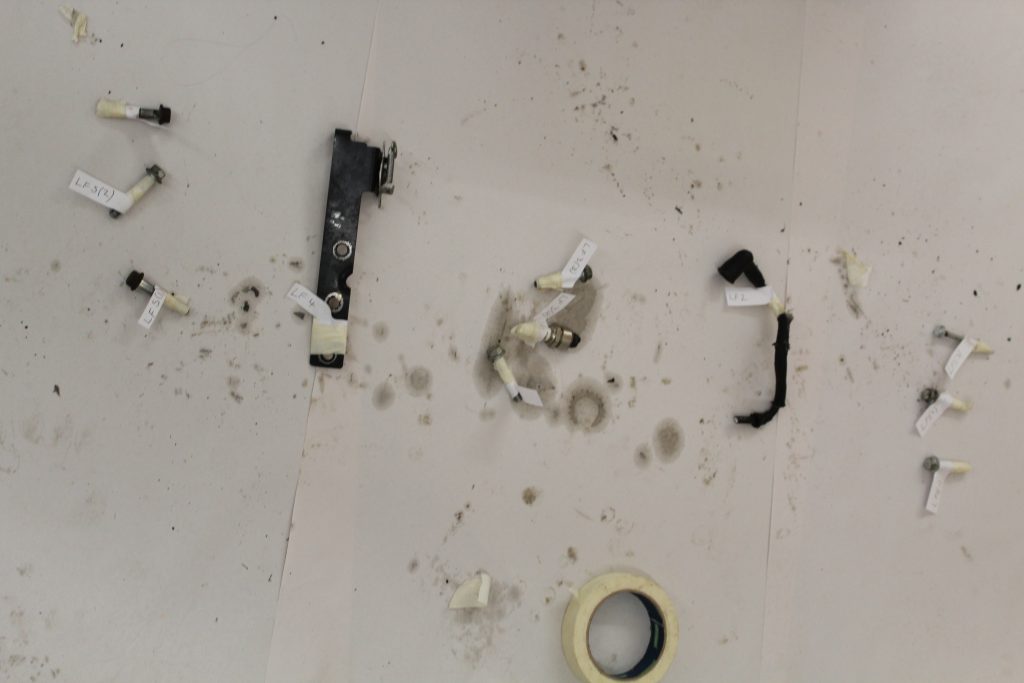
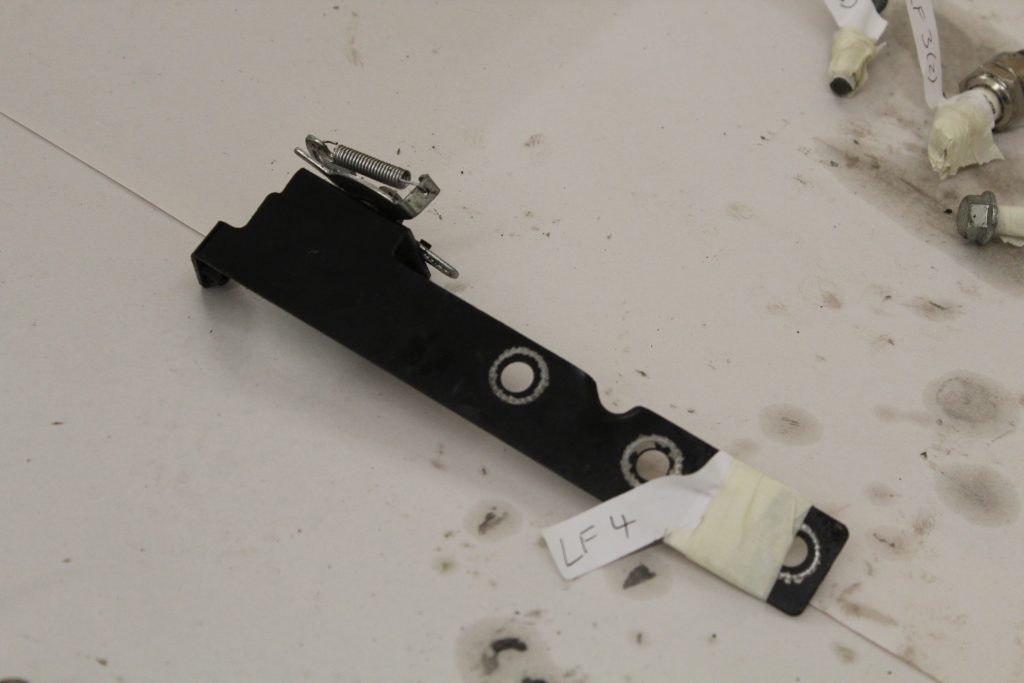
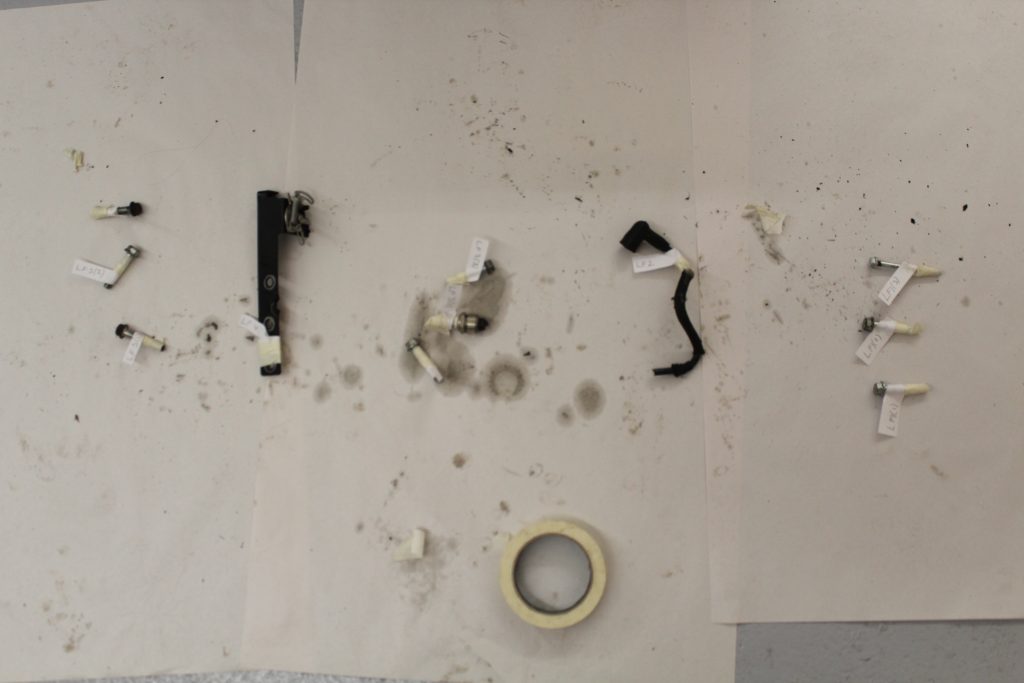
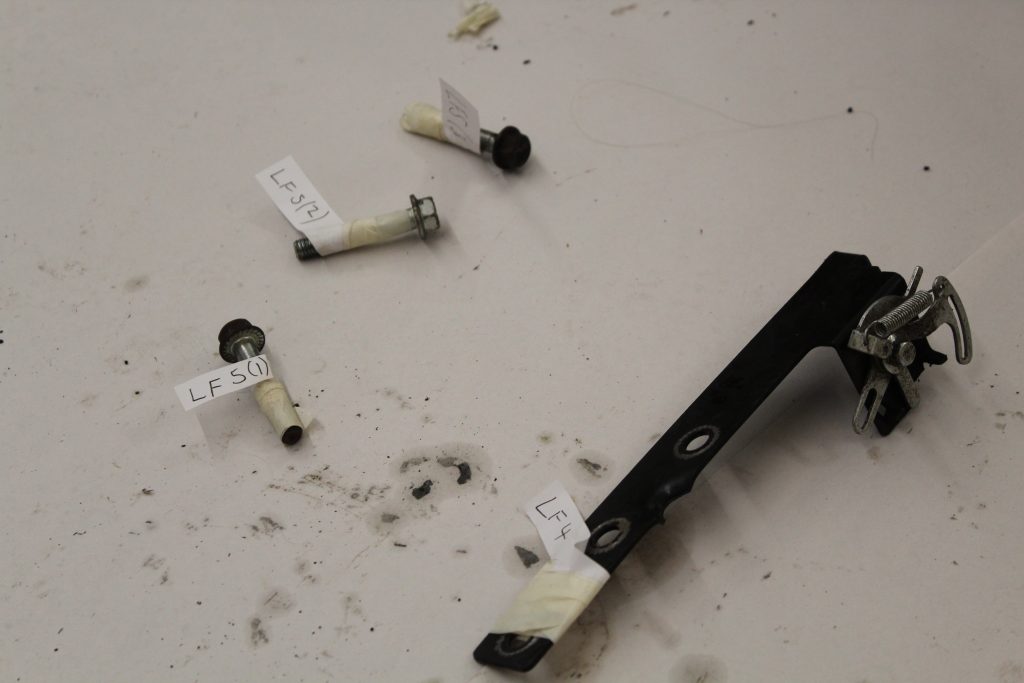
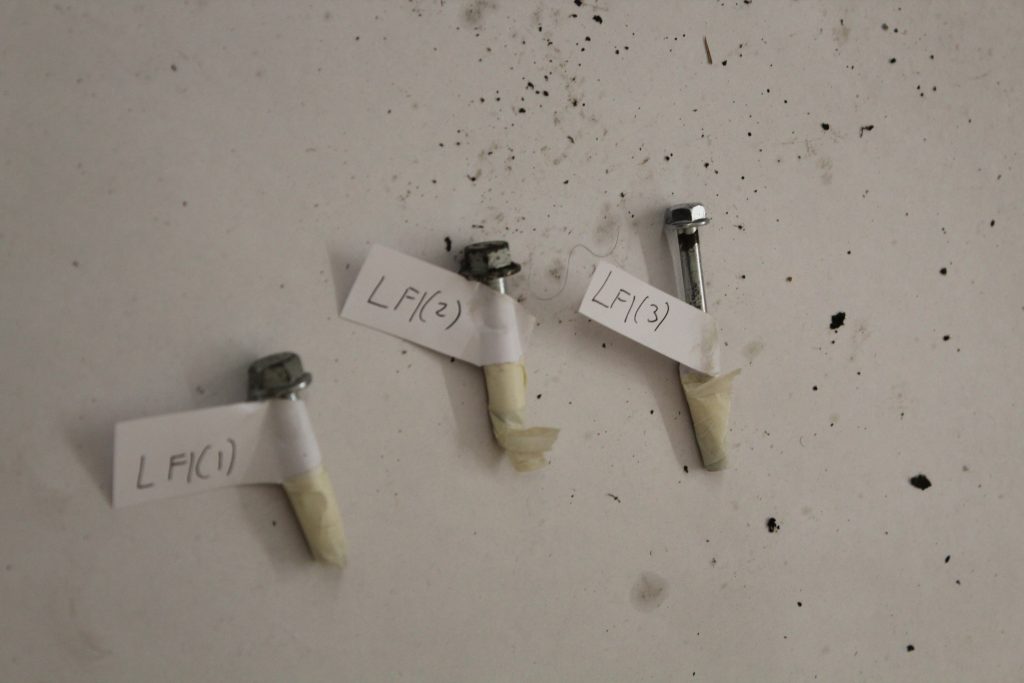
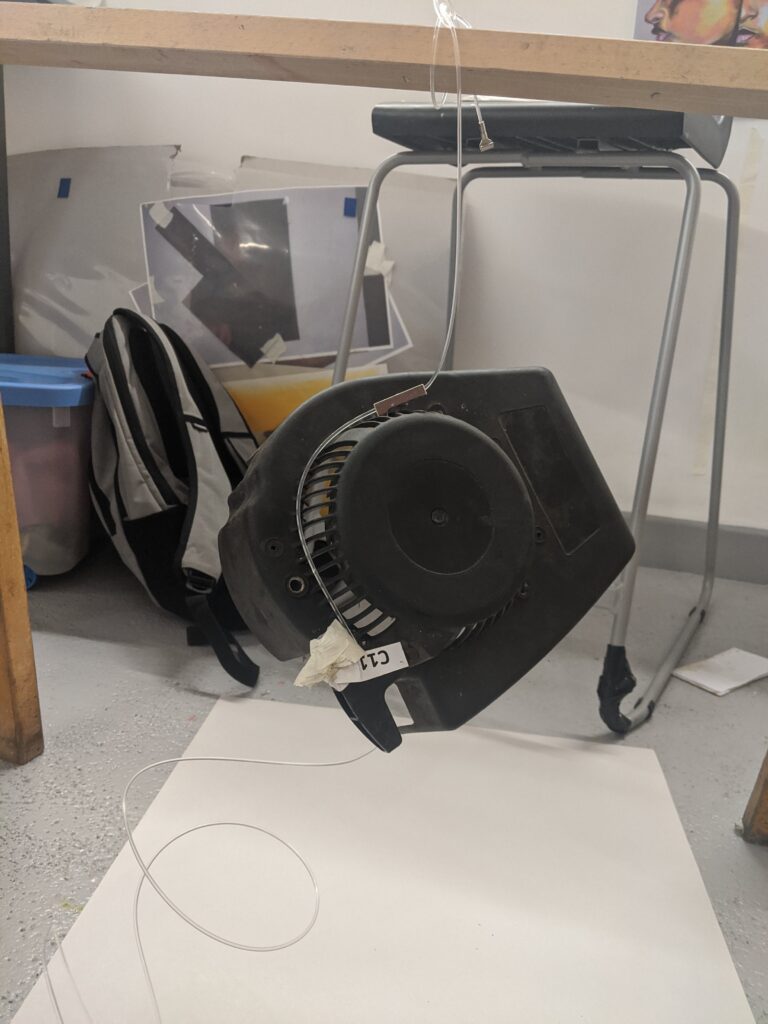
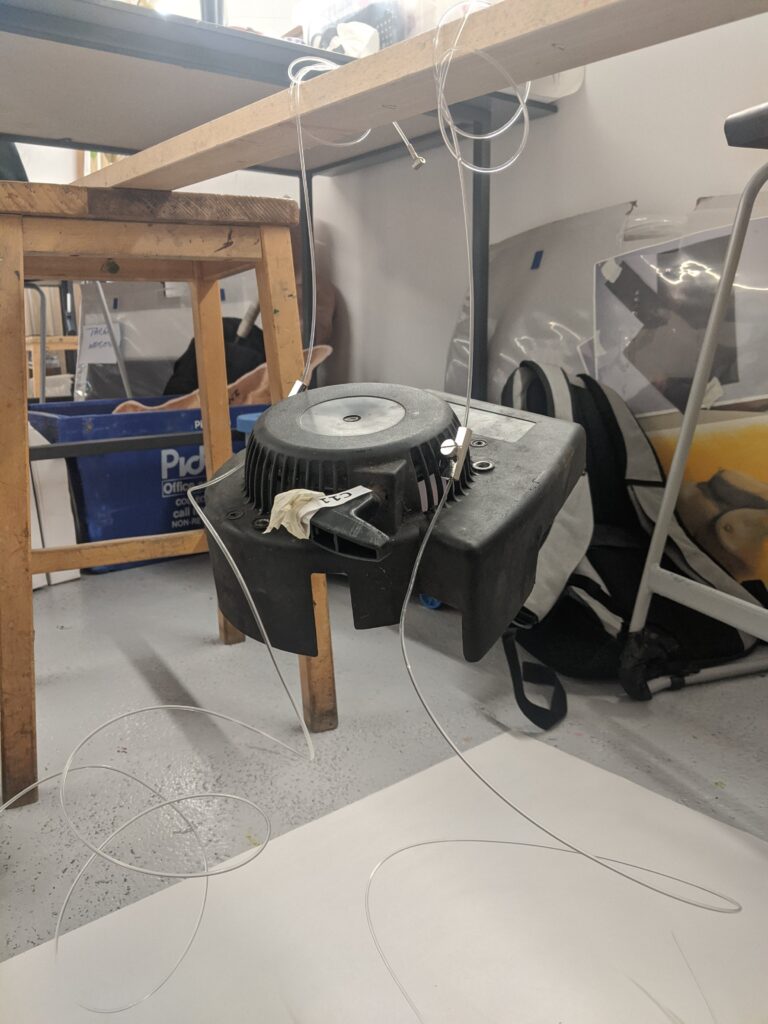
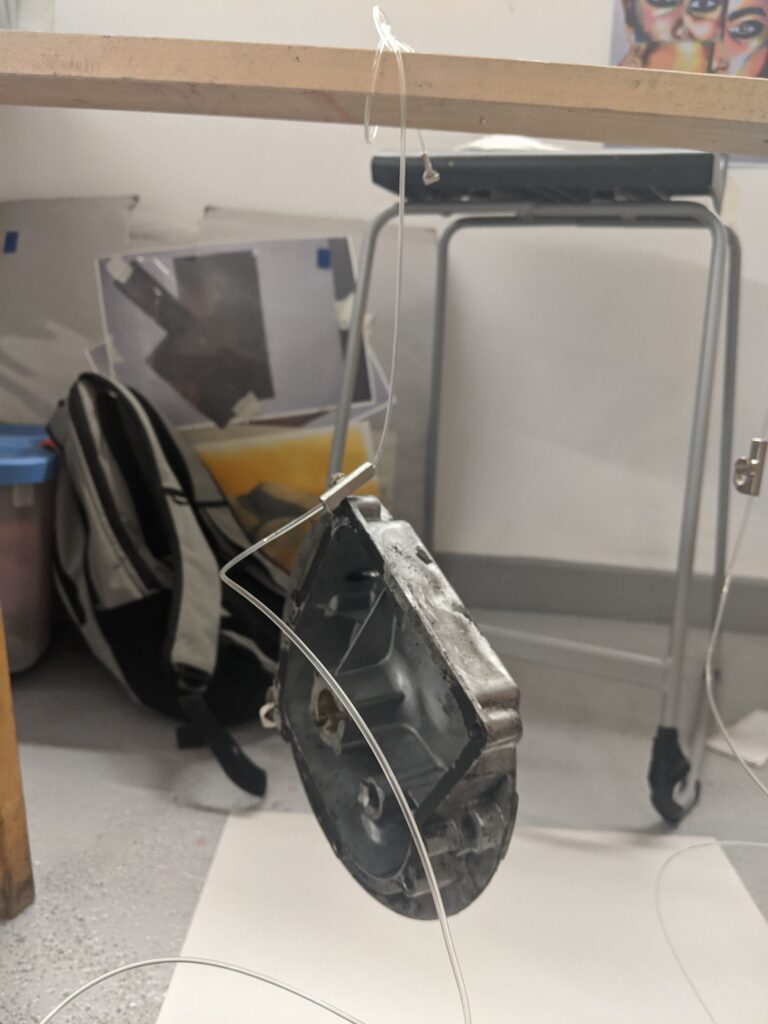
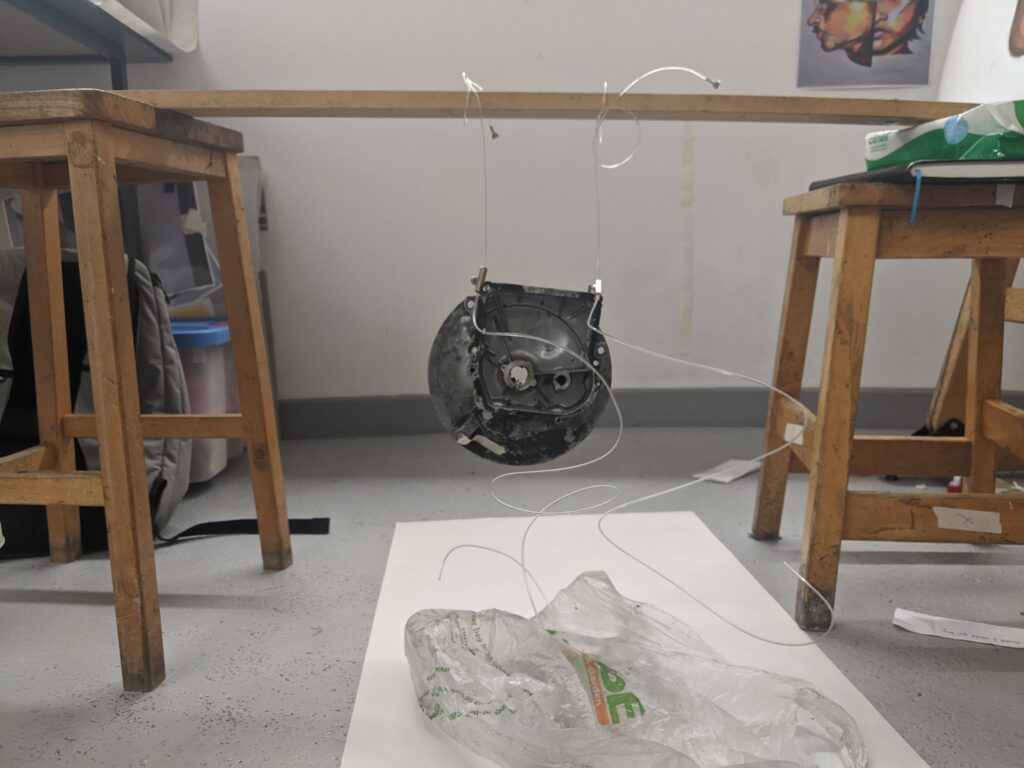
Plan (Digital)
I begin by simulating rope in Blender and seeing how it would react when interacting with certain objects. After testing it and modifying the settings of the physics that control it, I used the rope in my 3D plan of the installation.
Having labeled each individual component and defined the physics of how they would hang, it was time to pull it all together and make a rough representation of how everything would look. Using Blender, I created small boxes to represent significant components and cylinders to represent nuts, bolts, etc. Each shape had the corresponding identification code. Planning virtually gave me the opportunity to view such an installation in VR as if it were real.
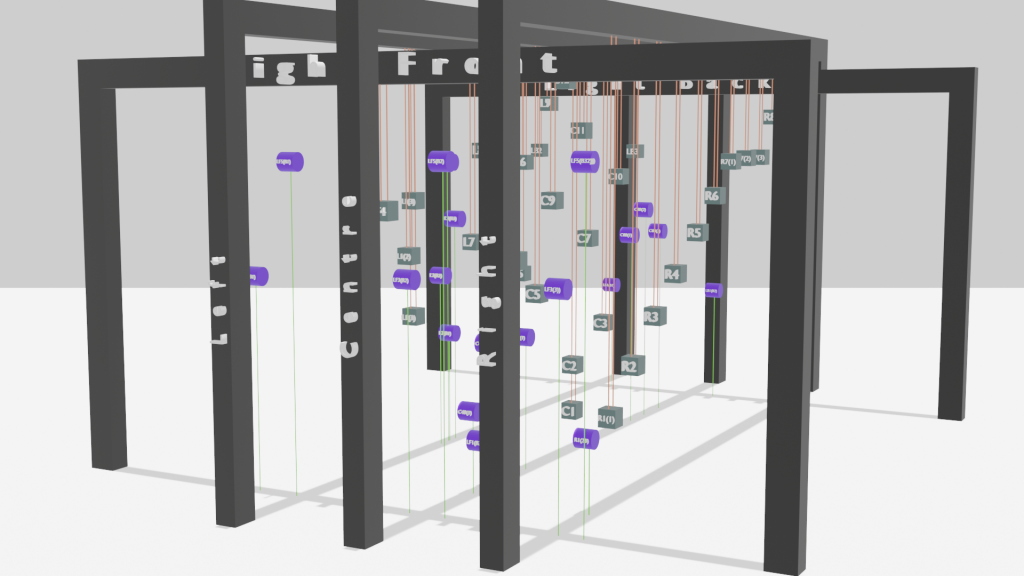
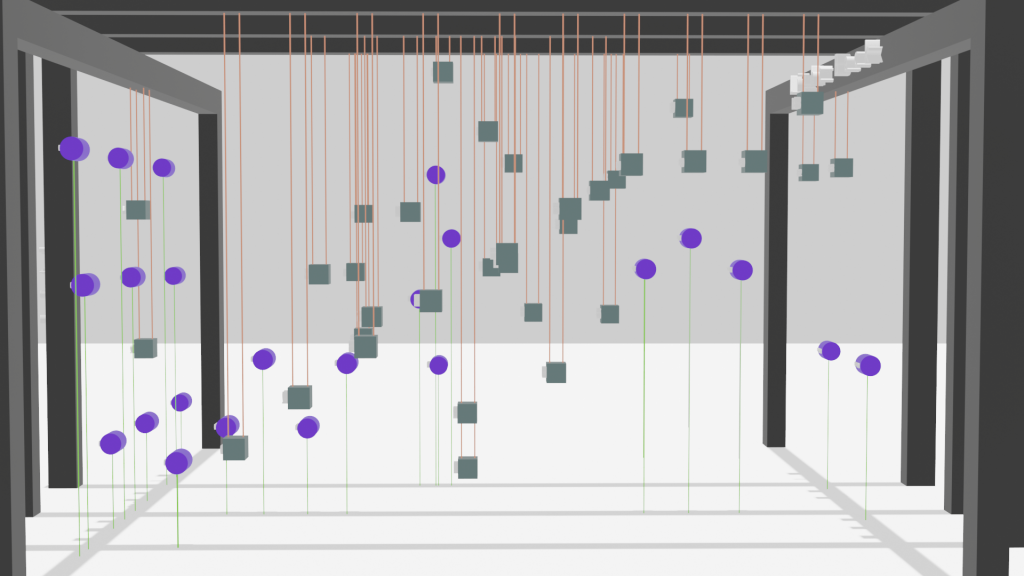
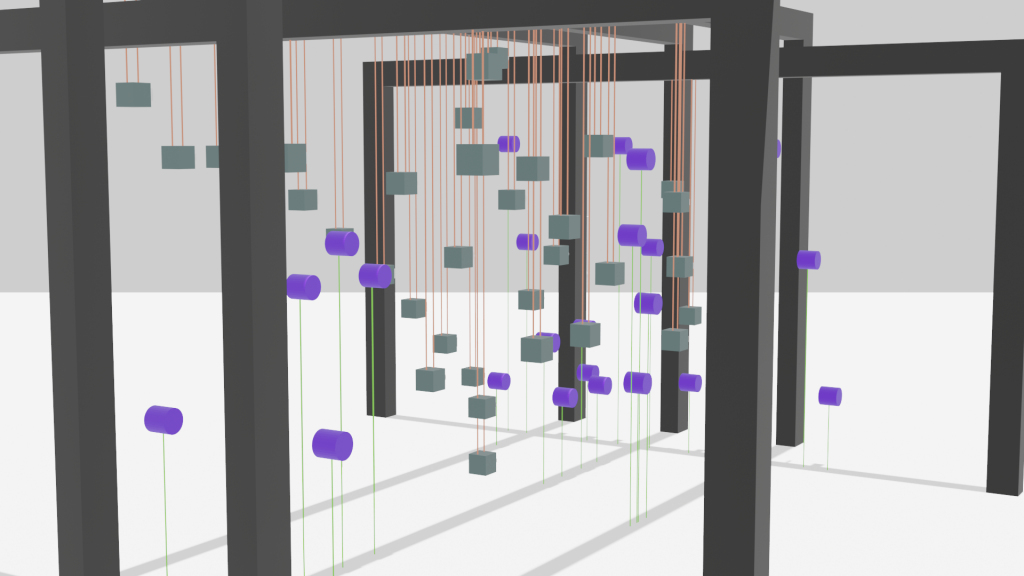
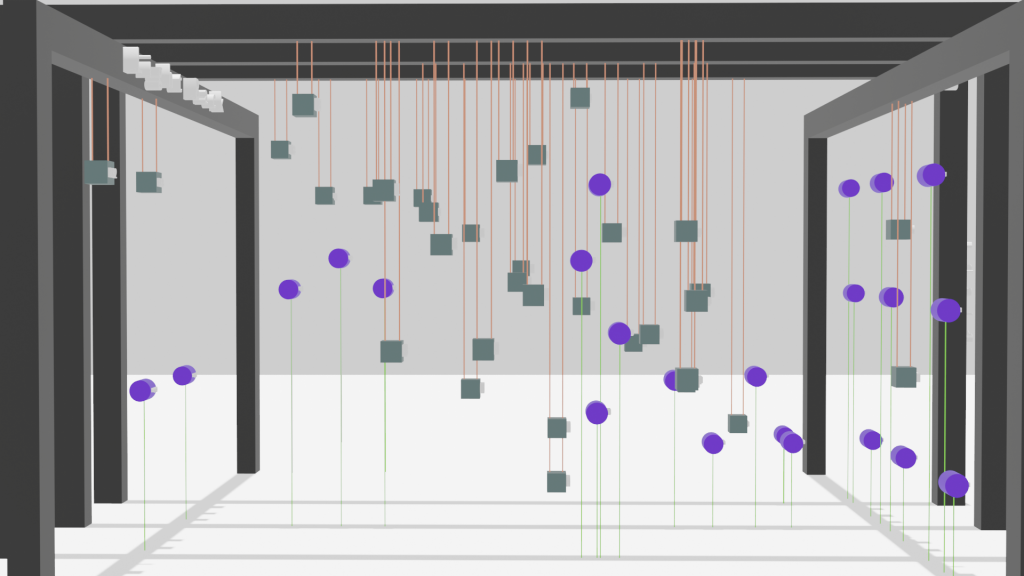
VR Hanging Plan with Mark
Time-lapse Process of Hanging Engine Pieces
Etienne-Jules Marey

Many hours, days and weeks were spent on this particular installation, therefore to show the passage of time, I glitched the timelapse videos above to resemble Marey’s pieces on chronology.